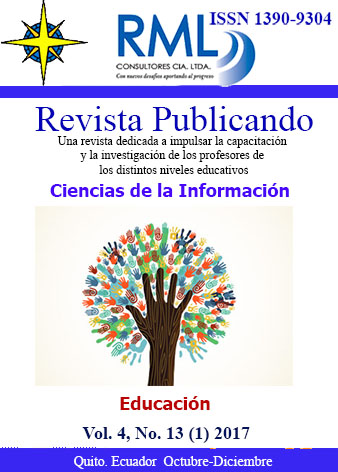Resumen
The article presents the result of the study in province of the development the cine-text/film construct translation. The first part of the analysis provides an overview on the historical development of the main types of translation, which are essentially used for the foreign cinematography interpretation. The authors also investigated the information about the origin and the subject matter of cine-text, based on scientific works by famous linguists including M.A. Efremovaand (2004) R.A. Matasov (2008]. Different classifications of translation mistakes were compiled during the research by combining a variety of methods. On that stage, we also resorted to the description of translation mistakes with the most destructive effect. The second part of the work demonstrates the implementation of considered regularities on the audiovisual production, which was used as a research material. It included 7 hours and 12 minutes of stage speech of screen adaptation of Thomas Harris's novels about Dr. Hannibal Lecter, which areRed Dragon (2002), The Silence of the Lambs (1991), Hannibal (2001). The study results display the broad educational view on the specifics of process of making the translation of the film based on a literary works: they can be used as the auxiliary material during the professional training and for the extension of background knowledge in the field of audiovisual translation.
Referencias
Analytics: distributions / kinometro.ru: film distribution in Russian, available online: http://www.kinometro.ru/kino/analitika.
America's 100 Greatest Heroes & Villains / American Entertainment Company Networks, available online http://www.filmsite.org/afi100heroesvilla.html.
Christal D.,(2003). English as a global language. Cambridge: Cambridge University Press, 382 p.
Efremova M., (2004) Kontseptkinoteksta: structurailingvoculturnayaspecifika. Volgograd: VGU.
Glossary: Television. Available online: http://routledgetextbooks.com/textbooks/_author/butler-9780415883283/glossary.php
Galperin I., (1981). Text as the subject of linguistics. Moscow: Nauka.
Lotman Y., (1973). Semiotikakinoiproblemykinoestiki. Tallin: EestiRaamat.
Matasov R.A.(2008). Istoriyakino/video perevoda. (In Russian). Moscow: VestnicMoskovskogoUniversiteta. â„–3. P. 3-27.
Mc Dougall W., (1928). Emotion and feeling distinguished. Worcester: ReymertМ. L.pp. 200-204.
Reis K., (2001). Criticism: The Potentials and Limitations. Categories and Criteria for Translation Quality Assessment. St. Jerome Publishing Ltd.
Zolotnytsky A., (1954). Kakdubliruyutsya filmy. Moscow: Iskusstvo.
Usted es libre de:
Compartir — copiar y redistribuir el material en cualquier medio o formato
Adaptar — remezclar, transformar y construir a partir del material
La licenciante no puede revocar estas libertades en tanto usted siga los términos de la licencia
Bajo los siguientes términos:
Atribución — Usted debe dar crédito de manera adecuada, brindar un enlace a la licencia, e indicar si se han realizado cambios. Puede hacerlo en cualquier forma razonable, pero no de forma tal que sugiera que usted o su uso tienen el apoyo de la licenciante.
NoComercial — Usted no puede hacer uso del material con propósitos comerciales.
CompartirIgual — Si remezcla, transforma o crea a partir del material, debe distribuir su contribución bajo la lamisma licencia del original.
